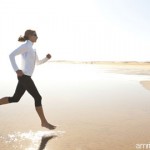To do this yourself, I suggest the following. Develop a list of journals whose contents would be of interest to you, and follow my instructions in the previous paragraph. Setting up the alerts was not burdensome, although it did take a couple of hours. It will connect you intimately with the worlds of clinical medicine and science—and it helps keep medicine fun.
And now, here are this month’s literature highlights.

COOL RUNNINGS
The Science Times section in The New York Times on April 26 of this year featured, “To beat the heat, drink a slushie first.” Subjects who had ingested ice slushies before running to exhaustion on a treadmill, indoors at 93° F and 54–56% humidity, exercised almost 10 minutes more than participants drinking ice water (50 versus 41 minutes). This may reflect dissipation of body heat to cause the phase change of ice to water necessary to consume the drink. This was a neat study and may be useful for anyone exercising in heat, including patients, whether they are serious or recreational athletes.
In the past five decades, I’ve run about 50 marathons and even one ultramarathon. I bring this up not only because I’m proud, but also because I have a special interest in material relating to exercise. Even though I usually run in the early morning, it’s sometimes virtually impossible to avoid the heat. However, I usually run longer than 40–50 minutes and am not particularly competitive anymore. Also, my running partners (see photo above) stop pretty frequently to smell the flowers and rest, which I’ve come to savor, so this may not have much practical value for me. Although the dogs are approaching 100 in dog years, I can’t tire them out except in extreme heat; when I go for 20–25-mile runs (probably hundreds of dog miles) preparing for a marathon, they just lope along easily, with heart rates never exceeding 110–115 bpm. I might try the slushies for them on hot days (dogs can’t sweat; they must dissipate heat through their paws or from panting; another reason we run when it’s cool and stop often).


